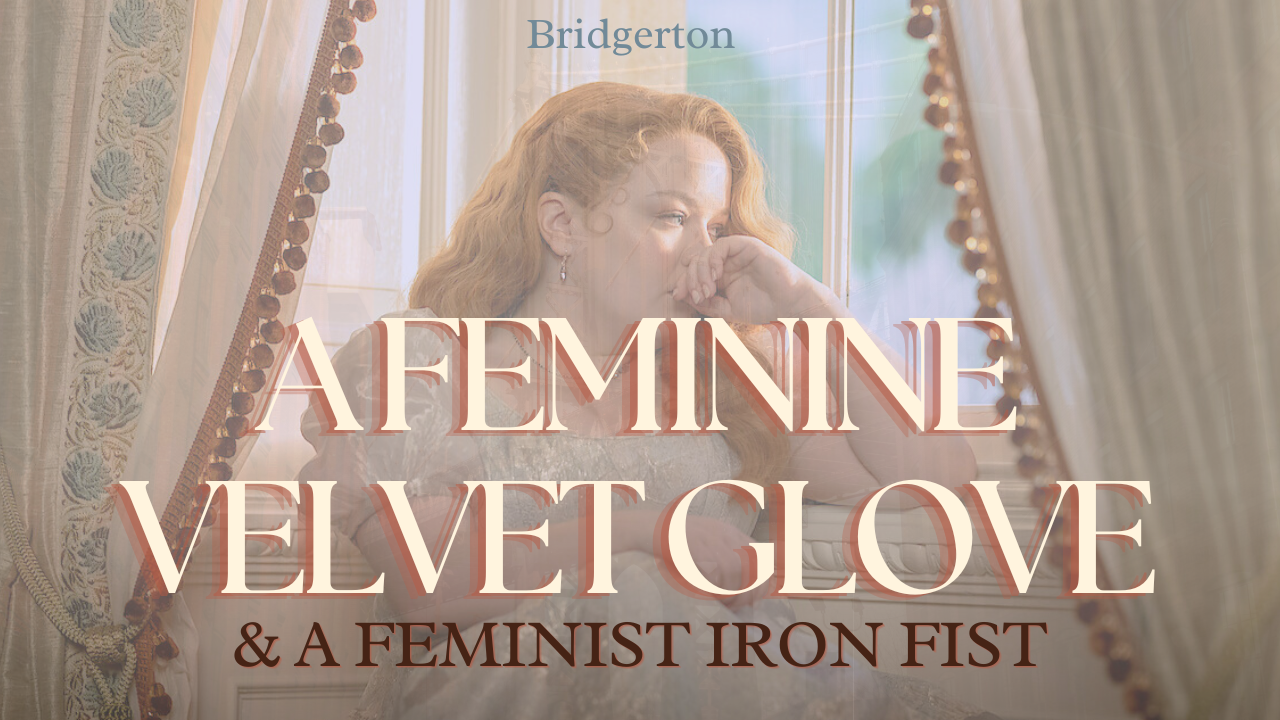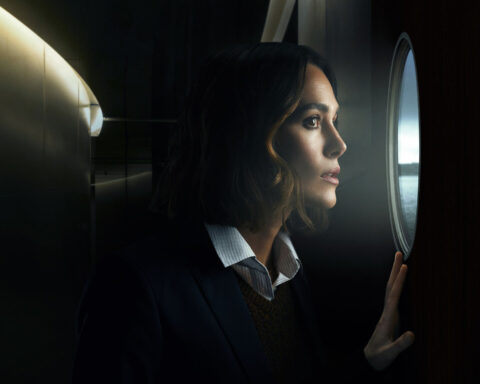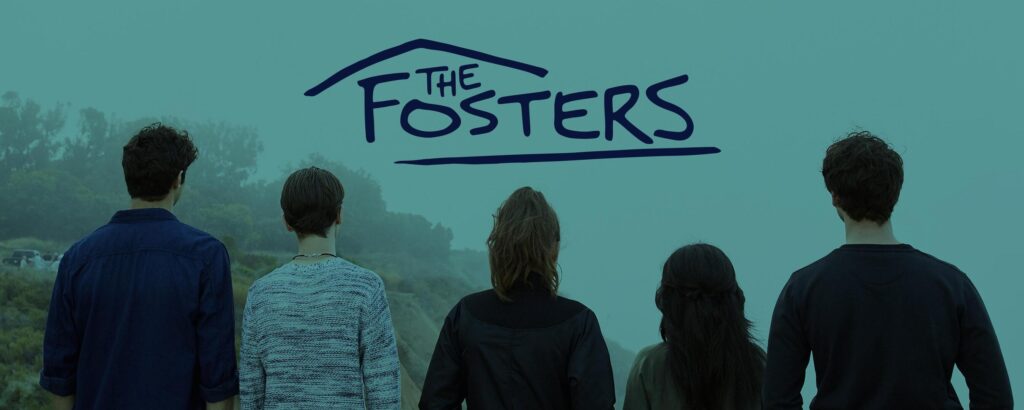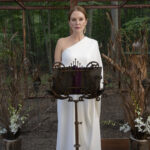A Feminine Velvet Glove, a Feminist Iron Fist
When Shonda Rhimes’ “Bridgerton” first graced our screens, it was immediately clear that this was no ordinary period drama. Enveloped in the opulent sheen of Regency England, the series is an aesthetic feast, replete with dashing dukes, resplendent ballgowns, and grandiose estates. However, beneath this facade of frivolous luxury lies a robust undercurrent of feminism, a potent force subtly weaving its way through the narrative. This article explores the intricate tapestry of feminist themes within “Bridgerton,” examining how the series subverts traditional gender roles, challenges societal norms, and champions female agency, all while delivering its message with wit and elegance.
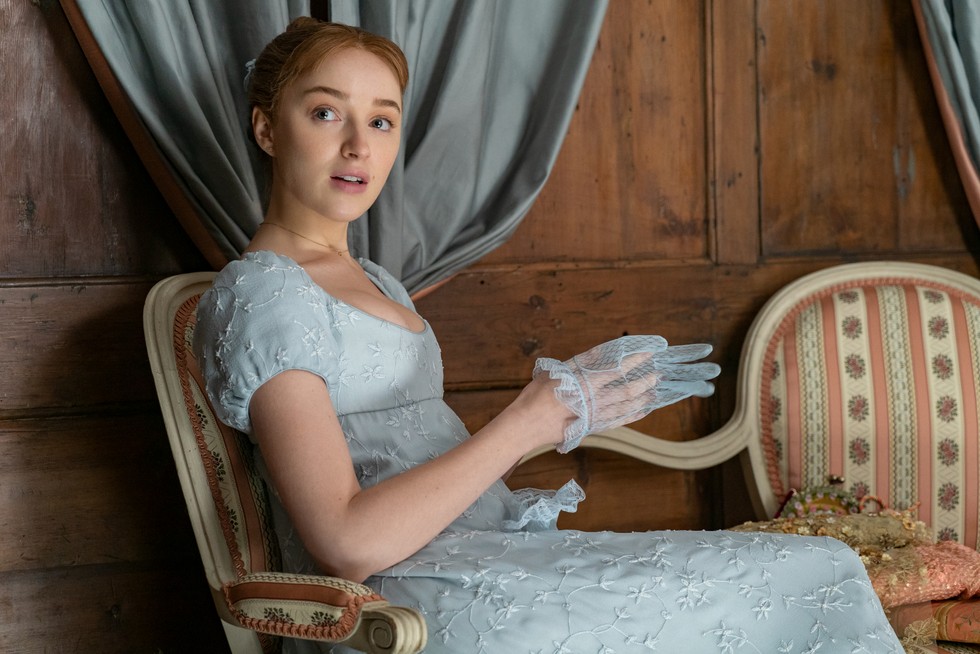
The Illusion of Power: Regency Women’s Struggle for Autonomy
At first glance, the women of “Bridgerton” might appear to be bound by the rigid confines of their era. The societal expectations of Regency England dictated that a woman’s primary goal was to secure a favorable marriage, often reducing her to little more than a pawn in a game of social advancement. However, the series deftly reveals that these women are far from powerless. Instead, they wield their limited influence with remarkable ingenuity, navigating the intricate web of societal expectations to carve out their own destinies.
Take, for instance, Daphne Bridgerton, the ostensibly demure debutante whose quest for a suitable match forms the crux of the first season. While Daphne initially appears to be the quintessential ingénue, her journey is one of self-discovery and empowerment. She learns to assert her desires, both romantic and sexual, challenging the patriarchal norms that seek to confine her. Her eventual partnership with Simon, the Duke of Hastings, is not one of submission but of mutual respect and equality, a radical notion in their society.
Similarly, the character of Marina Thompson, a distant Featherington cousin, highlights the precariousness of a woman’s position in Regency society. Pregnant and unwed, Marina’s situation exposes the harsh realities faced by women who dared to transgress societal norms. Her determination to secure a future for herself and her child, even at great personal cost, underscores the strength and resilience of women in the face of adversity.
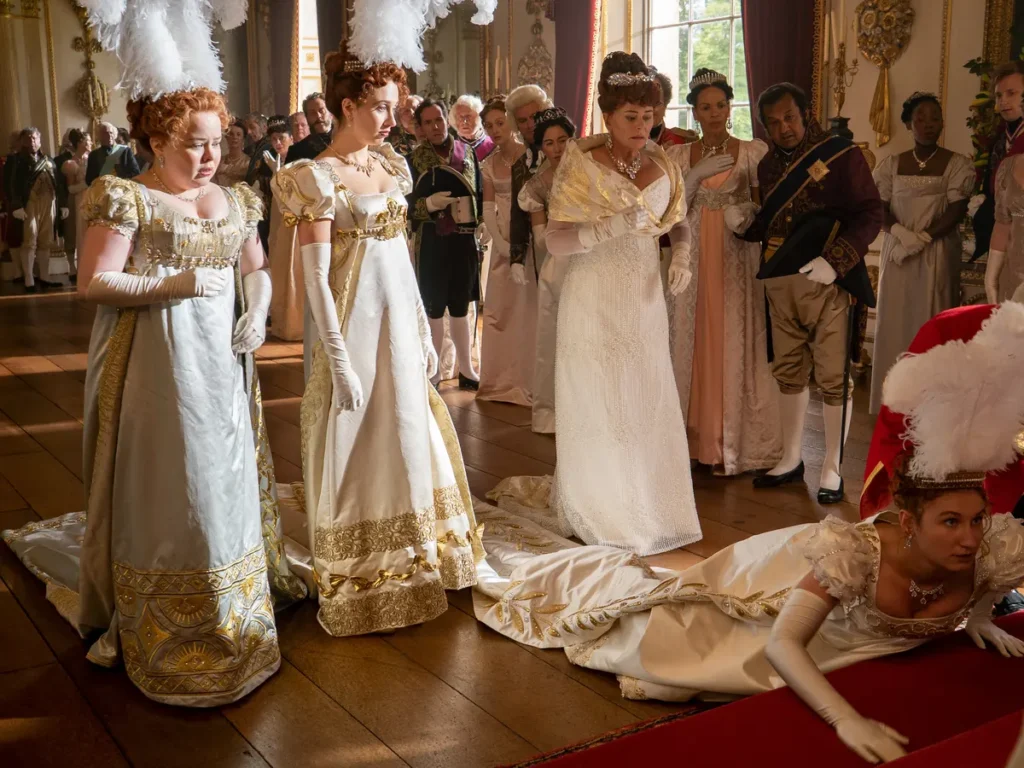
The Pen is Mightier: Lady Whistledown’s Subversive Chronicle
One of the most ingenious devices in “Bridgerton” is the character of Lady Whistledown, the anonymous gossip columnist whose sharp quill holds the ton in thrall. Voiced by the indomitable Julie Andrews, Lady Whistledown serves as both narrator and social commentator, her scandalous revelations disrupting the status quo with gleeful abandon.
Lady Whistledown’s missives are a masterclass in subversion. In a society where women’s voices are often silenced, her anonymous pamphlets wield a formidable power, exposing the hypocrisies and injustices of the aristocracy. Through Lady Whistledown, the series underscores the importance of female agency and the power of the written word as a tool for social change. Her true identity, once revealed, only further cements the feminist ethos of the series, showcasing a woman who refuses to be confined by societal expectations.
Penelope Featherington, the true identity behind Lady Whistledown, embodies the quiet strength of an underestimated woman. Often overlooked and underestimated due to her appearance and social standing, Penelope uses her intelligence and keen observation skills to influence the events of the series from the shadows. Her dual identity as a wallflower and a powerful commentator challenges the notion that power must be overtly displayed to be effective.
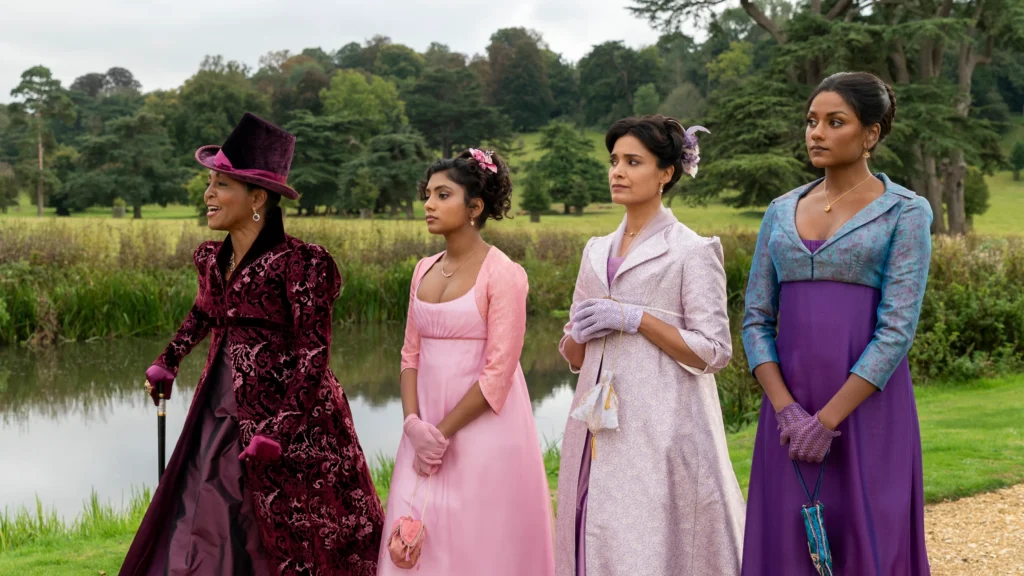
Sisterhood and Solidarity: The Women of Bridgerton
“Bridgerton” excels in portraying complex, multifaceted female relationships that transcend the superficial rivalries often depicted in period dramas. The series places a strong emphasis on sisterhood and solidarity, presenting a diverse array of women who support and uplift one another.
The Bridgerton sisters, for example, are a study in contrasts, each with her own distinct personality and aspirations. Eloise Bridgerton, in particular, emerges as a feminist icon in her own right. Sharp-witted and fiercely independent, Eloise rejects the traditional path laid out for her, yearning for a life beyond the confines of marriage and motherhood. Her close bond with Penelope Featherington, another quietly subversive character, highlights the importance of female friendship as a source of strength and resilience.
Eloise’s relationship with her family, especially her mother, Lady Violet Bridgerton, adds another layer to the narrative. Lady Violet, while operating within the confines of her society, subtly encourages her daughters to seek happiness and fulfillment beyond the traditional roles expected of them. This intergenerational dynamic showcases the evolving nature of feminism, where each generation builds upon the struggles and triumphs of the previous one.
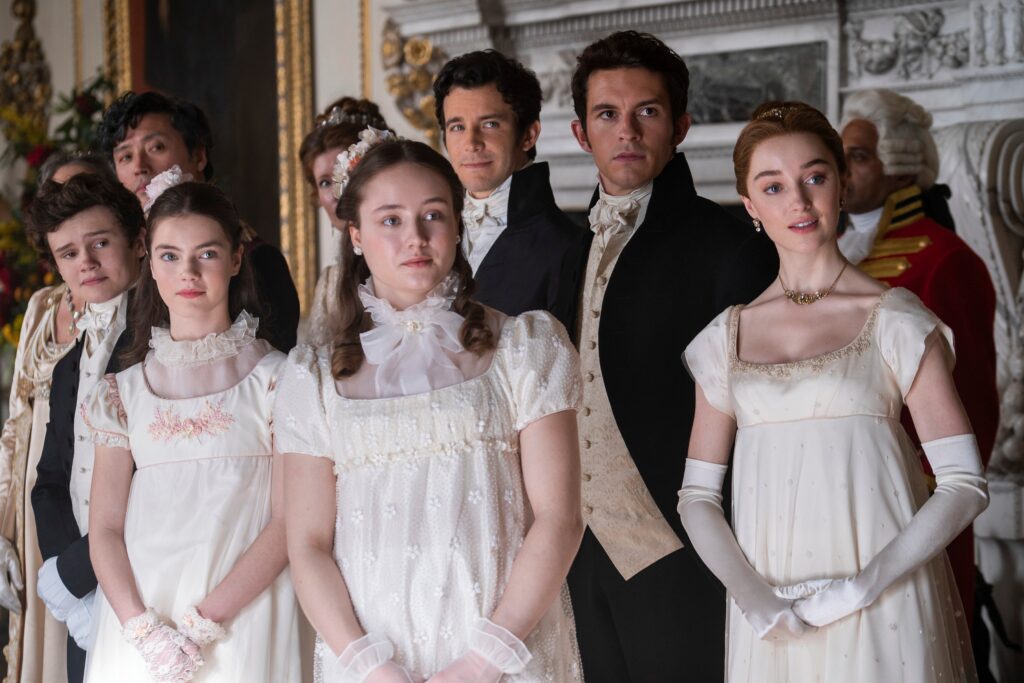
The Male Allies: Progressive Men in a Regency World
While “Bridgerton” is undeniably a celebration of female empowerment, it also acknowledges the crucial role of male allies in the feminist movement. The series presents a number of progressive male characters who challenge the toxic masculinity of their time and support the women in their lives.
Simon Basset, the brooding Duke of Hastings, is a prime example. Despite his initial resistance to marriage, Simon’s relationship with Daphne evolves into a partnership of equals. He respects her intelligence, values her opinions, and supports her ambitions, embodying a more modern, egalitarian approach to relationships. Similarly, Colin Bridgerton’s respect for Penelope’s intellect and Eloise’s determination marks him as a man ahead of his time.
Anthony Bridgerton, the eldest sibling, also undergoes significant character development. Initially portrayed as a domineering figure, Anthony’s journey reveals his own struggles with the burdens of patriarchy. His evolving understanding of his sisters’ desires and ambitions, coupled with his own quest for a meaningful connection, underscores the series’ message that true strength lies in empathy and mutual respect.

Sexuality and Consent: Redefining Romance
One of the most groundbreaking aspects of “Bridgerton” is its frank portrayal of sexuality and consent. The series does not shy away from depicting the complexities of sexual relationships, addressing issues such as marital rape, sexual pleasure, and the importance of consent.
Daphne’s journey of sexual awakening is handled with sensitivity and nuance, emphasizing her right to desire and pleasure. The series also tackles the issue of marital rape head-on, highlighting the need for mutual consent in all relationships. By addressing these issues, “Bridgerton” challenges the traditional narratives of romance and promotes a healthier, more respectful approach to sexual relationships.
The explicit depiction of female desire is another radical aspect of the series. Women in “Bridgerton” are not merely passive recipients of male attention but active participants in their own sexual journeys. This portrayal is a stark contrast to the often sanitized and male-centric depictions of sexuality in period dramas, offering a more authentic and empowering narrative.
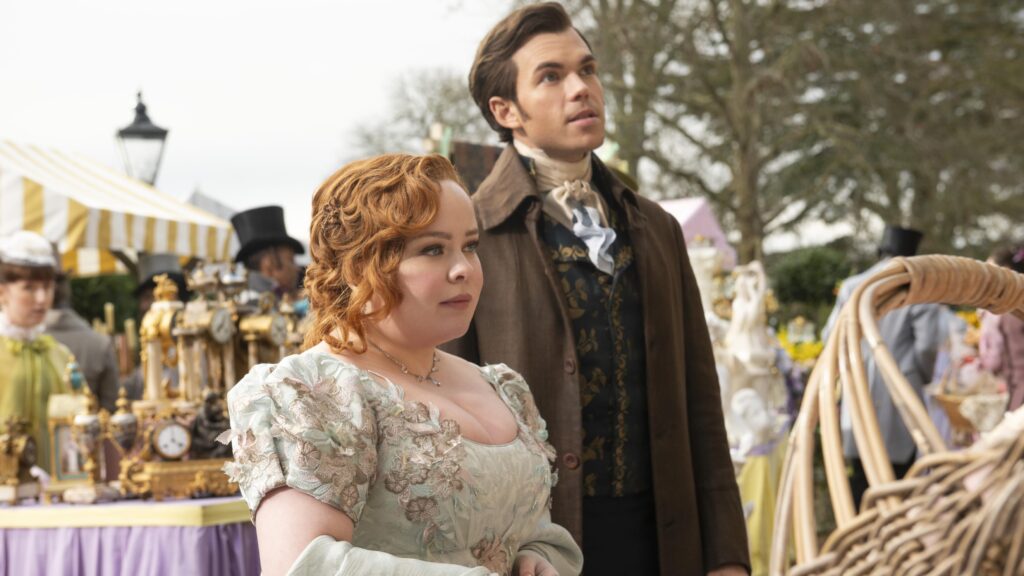
The Intersectionality of Feminism: Race and Class
“Bridgerton” also explores the intersectionality of feminism, addressing issues of race and class within the context of Regency society. The series features a diverse cast, with actors of color playing prominent roles, including the Duke of Hastings and Queen Charlotte. This deliberate casting choice challenges the often whitewashed portrayals of historical periods, offering a more inclusive vision of the past.
The series also addresses the class disparities that existed in Regency England, highlighting the struggles of characters like Marina Thompson, who faces significant challenges due to her lower social status. By addressing these issues, “Bridgerton” underscores the importance of an intersectional approach to feminism, recognizing that the fight for gender equality must also address issues of race and class.
Queen Charlotte, portrayed by Golda Rosheuvel, stands as a beacon of power and authority, her presence alone challenging the historical erasure of people of color from Regency narratives. Her complex relationship with King George, marred by his illness, adds depth to her character, illustrating the personal sacrifices and resilience required of women in power.
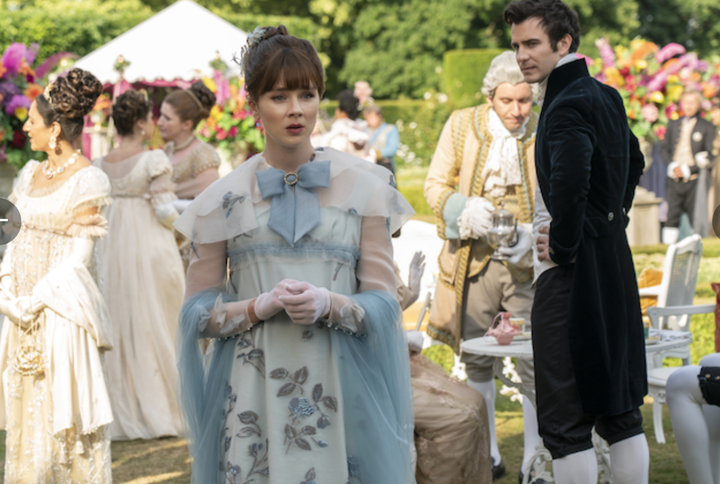
Eloise Bridgerton: A Conduit for LGBT Theories
Eloise Bridgerton’s character, with her sharp wit, independent spirit, and resistance to societal norms, has become a focal point for various feminist and LGBT theories. While the series has not explicitly defined Eloise’s sexual orientation, her character’s journey resonates with many themes central to the LGBT experience, offering a fertile ground for speculative analysis and interpretation.
Eloise’s disdain for the traditional paths expected of women—marriage and motherhood—mirrors the experiences of many LGBT individuals who feel alienated by heteronormative expectations. Her yearning for intellectual stimulation and meaningful pursuits beyond societal conventions speaks to a broader desire for authenticity and self-expression, core tenets of both feminist and LGBT movements.
In literary and queer theory, the concept of “queering” involves challenging and subverting traditional narratives and roles. Eloise embodies this through her refusal to conform, her questioning of societal norms, and her search for a different kind of life. Her close friendship with Penelope Featherington, marked by deep emotional intimacy and mutual support, can be viewed through a queer lens, suggesting a potential for non-heteronormative relationships that transcend traditional friendship boundaries.
Eloise’s journey also touches on themes of visibility and voice. Her frustration with the limited roles available to women and her desire to be seen and heard resonate with the struggles of LGBT individuals for recognition and acceptance. Her admiration for Lady Whistledown’s audacity and influence underscores her own aspirations to break free from societal constraints and carve out a space for herself in a world that often seeks to silence her.
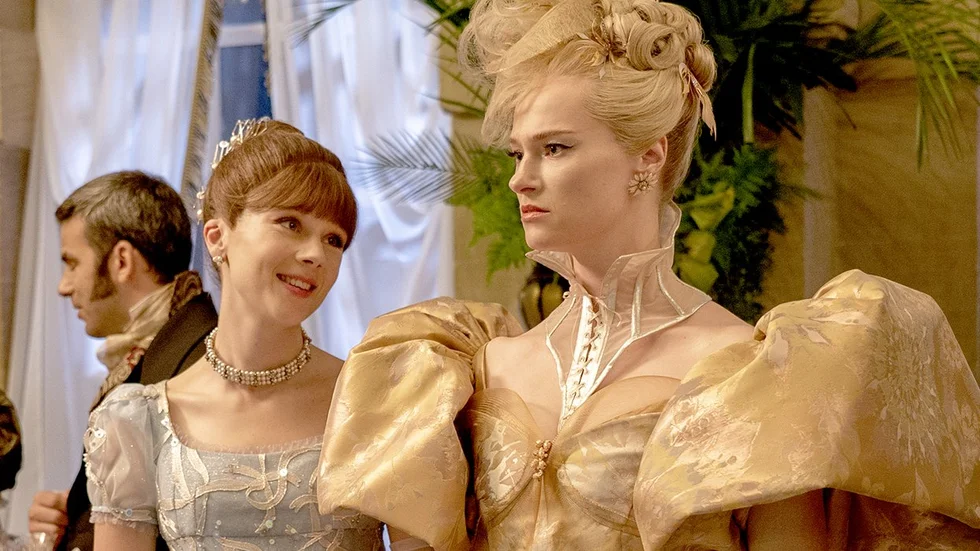
Queering the Regency: Subtext and Speculation
The subtext surrounding Eloise and her potential queerness invites viewers to consider the broader implications of LGBT representation in period dramas. Historically, LGBT individuals have been largely erased from mainstream narratives, their stories relegated to the margins or portrayed through tragic and reductive tropes. “Bridgerton,” with its commitment to diversity and inclusion, offers a unique opportunity to explore these themes in a nuanced and respectful manner.
The speculative nature of Eloise’s sexuality allows for a richer, more layered interpretation of her character. It challenges viewers to think critically about the ways in which societal norms shape our understanding of identity and the importance of representation in media. By embracing the ambiguity and complexity of Eloise’s journey, “Bridgerton” encourages a more inclusive and expansive view of love, desire, and self-expression.
The potential queering of Eloise’s character also invites a reevaluation of other relationships within the series. It encourages viewers to look beyond the surface and consider the deeper emotional and psychological connections between characters, recognizing the fluidity and diversity of human experiences. This approach aligns with contemporary understandings of gender and sexuality, which reject rigid binaries and celebrate a spectrum of identities.
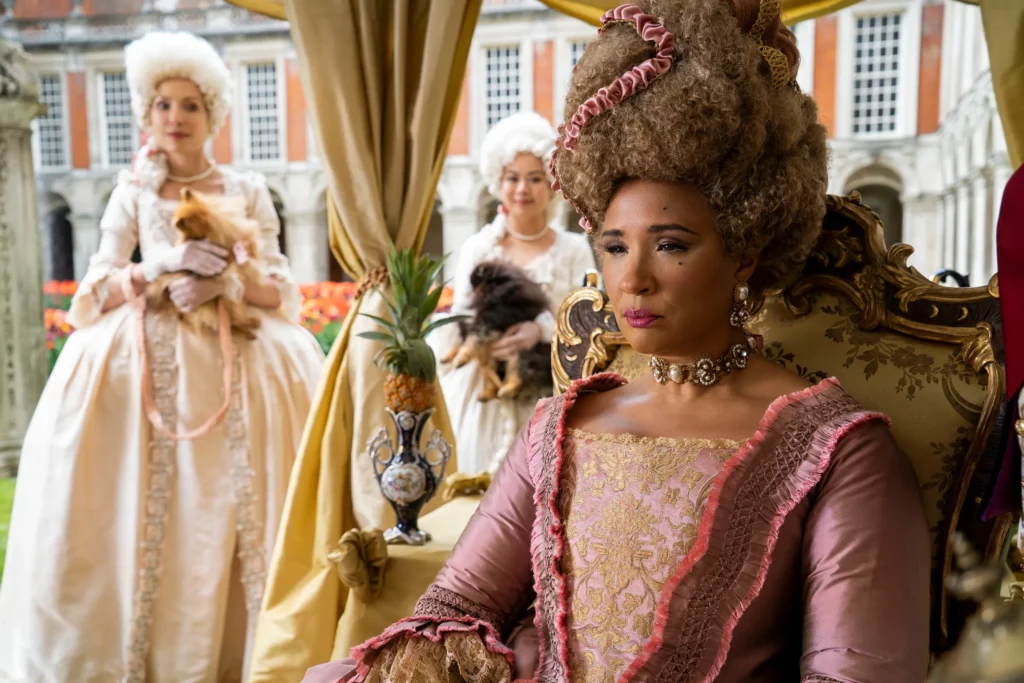
Fashion as Feminist Armor: The Semiotics of Bridgerton’s Wardrobe
Fashion in “Bridgerton” is not merely a backdrop but a character in its own right, serving as a powerful tool for self-expression and rebellion. The lavish costumes, with their vibrant colors, intricate details, and period-accurate designs, convey more than just aesthetic appeal; they articulate the inner lives and aspirations of the characters, particularly the women.
Daphne’s evolution is mirrored in her wardrobe. Her transition from pastel-toned debutante dresses to bolder, more assertive styles reflects her journey towards self-discovery and empowerment. Similarly, the Featheringtons’ flamboyant attire, often criticized as gaudy, can be seen as a form of resistance against societal norms that dictate taste and propriety.
Eloise’s fashion choices further underscore her defiance. Her preference for more subdued colors and practical attire sets her apart from her peers, signaling her rejection of the marriage market’s superficiality. This sartorial distinction aligns with feminist critiques of fashion as a tool of patriarchal control, highlighting Eloise’s desire to define herself on her own terms.
The use of fashion as feminist armor extends to the male characters as well. Simon Basset’s meticulously tailored suits and Anthony Bridgerton’s authoritative attire reflect their societal roles and personal struggles. By carefully curating their appearances, these characters navigate the expectations placed upon them, using fashion to assert their identities and challenge the status quo.
Music and Modernity: The Feminist Undercurrents of Bridgerton’s Soundtrack
The anachronistic soundtrack of “Bridgerton” serves as a clever narrative device, blending contemporary pop hits with classical arrangements to create a unique auditory experience. This fusion of old and new underscores the series’ feminist themes, bridging the gap between past and present and highlighting the timelessness of the struggles depicted.
Songs like Ariana Grande’s “Thank U, Next” and Billie Eilish’s “Bad Guy,” reimagined as orchestral pieces, add a modern feminist twist to the Regency setting. These tracks, with their themes of self-empowerment and defiance, resonate with the characters’ journeys, particularly the women, who navigate a world that often seeks to limit their potential.
The choice of music also reflects the series’ commitment to inclusivity and representation. By incorporating diverse musical genres and artists, “Bridgerton” broadens its appeal and emphasizes the universal nature of its themes. This approach aligns with feminist principles of intersectionality, recognizing the importance of diverse voices and experiences in the fight for equality.
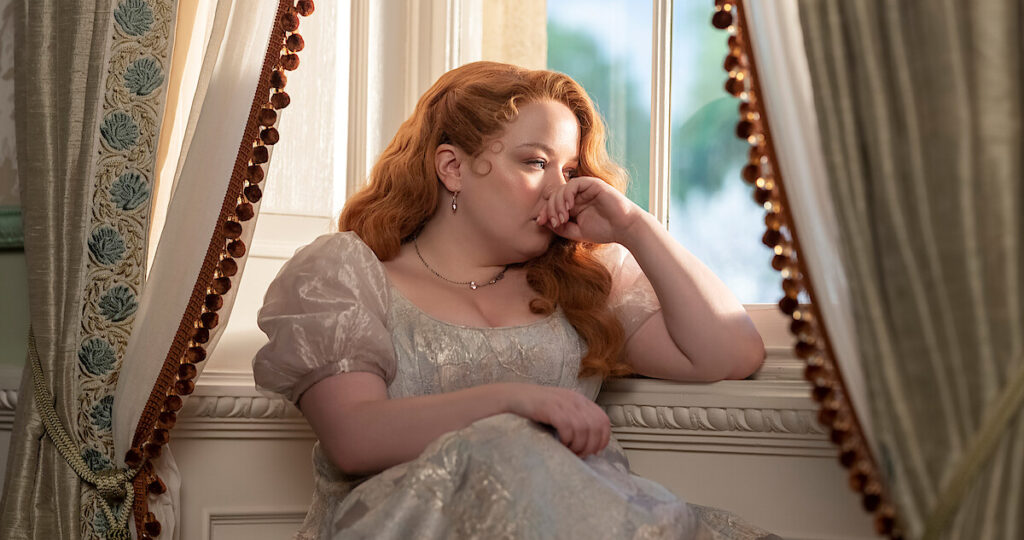
The Art of Subversion: Bridgerton’s Cinematic Techniques
“Bridgerton” employs a variety of cinematic techniques to enhance its feminist narrative, from its vibrant color palette to its dynamic camera work. The series’ visual style is both a nod to traditional period dramas and a deliberate departure from their conventions, creating a visually engaging and thought-provoking experience.
The use of color, for instance, is a powerful tool for storytelling. The Bridgerton family’s blue hues convey a sense of stability and tradition, while the Featheringtons’ bold yellows and greens reflect their more rebellious spirit. These color choices not only distinguish the characters but also symbolize their internal conflicts and aspirations.
Camera angles and framing also play a crucial role in highlighting the power dynamics at play. Close-up shots of the characters’ faces capture their emotions and vulnerabilities, while wide shots of grand ballrooms and opulent estates underscore the societal pressures they face. By juxtaposing these perspectives, the series emphasizes the tension between individual desires and societal expectations.
The series’ use of montage and parallel editing further enhances its feminist themes. By intercutting scenes of personal triumphs and struggles with broader social events, “Bridgerton” draws attention to the interconnectedness of individual and collective experiences. This technique underscores the importance of solidarity and collective action in the fight for gender equality.
Literary Inspirations: Bridgerton’s Feminist Heritage
“Bridgerton” draws inspiration from a rich literary heritage, weaving together elements of classic literature and feminist theory to create a nuanced and compelling narrative. The series pays homage to the works of Jane Austen, the Brontë sisters, and other seminal authors, while also incorporating contemporary feminist ideas.
The influence of Austen is particularly evident in the series’ exploration of marriage and social mobility. Like Austen’s heroines, the women of “Bridgerton” navigate a world where marriage is both a personal and economic necessity, using their wit and intelligence to secure their futures. However, “Bridgerton” also pushes beyond Austen’s limitations, addressing issues of race, class, and sexuality in ways that Austen’s works did not.
The series also echoes the themes of the Brontë sisters, particularly in its portrayal of passionate and complex relationships. Characters like Simon and Daphne, with their intense emotional struggles, evoke the tempestuous romances of “Wuthering Heights” and “Jane Eyre.” This connection to the Brontës underscores the series’ commitment to depicting multifaceted and authentic female experiences.
Incorporating feminist theory, “Bridgerton” challenges the traditional narratives of romance and domesticity. The series’ emphasis on female agency, consent, and intersectionality aligns with contemporary feminist thought, offering a more progressive and inclusive vision of society. By blending these literary and theoretical influences, “Bridgerton” creates a rich and layered narrative that resonates with modern audiences.
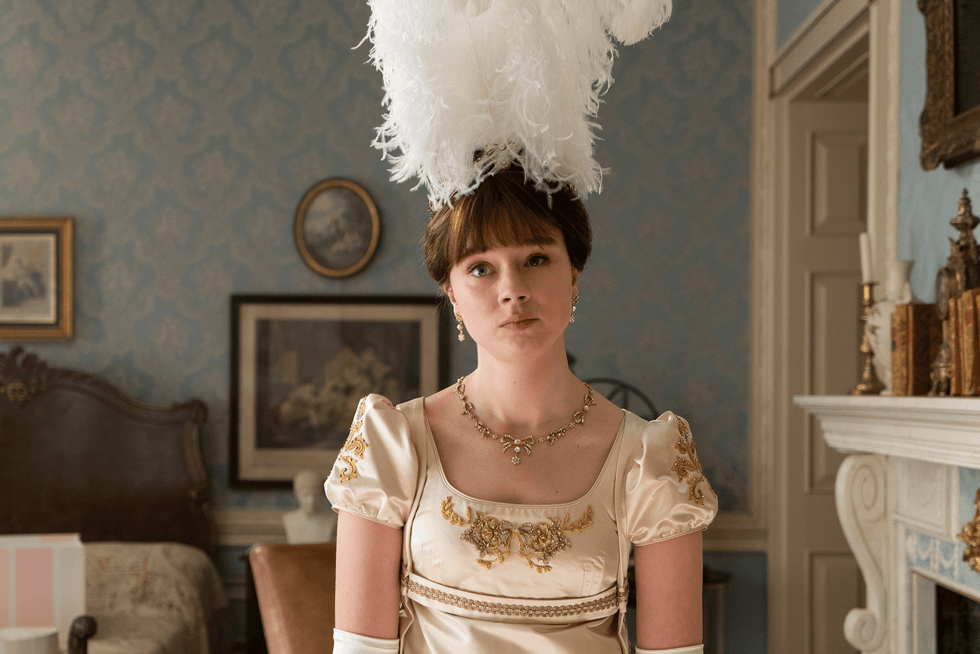
The Future of Feminist Storytelling: Bridgerton’s Legacy
As “Bridgerton” continues to captivate audiences, its impact on the landscape of feminist storytelling is becoming increasingly evident. The series has set a new standard for period dramas, demonstrating that it is possible to combine historical accuracy with modern sensibilities and progressive themes.
The success of “Bridgerton” has paved the way for more diverse and inclusive narratives, encouraging other creators to explore underrepresented voices and perspectives. By challenging traditional gender roles and societal norms, the series has expanded the possibilities for feminist storytelling, inspiring a new generation of writers, directors, and actors.
“Bridgerton’s” legacy also extends to its audience, fostering important conversations about gender, race, class, and sexuality. The series has sparked discussions about the importance of representation and the need for more inclusive media, highlighting the power of storytelling to effect social change. As viewers engage with these themes, they are encouraged to reflect on their own beliefs and attitudes, promoting a more equitable and empathetic society.
A Modern Riot Grrrl Manifesto in Regency Garb
In conclusion, “Bridgerton” is a masterful blend of romance, drama, and social commentary, offering a fresh and feminist take on the period drama genre. Through its nuanced portrayal of female characters, progressive male allies, and frank discussions of sexuality and consent, the series challenges the traditional narratives of its time, promoting a more inclusive and egalitarian vision of society. “Bridgerton” is not just a feast for the eyes; it is a celebration of female agency, a call for equality, and a reminder that the fight for feminism is as relevant today as it was in Regency England.
By embracing the complexities and contradictions of its characters and setting, “Bridgerton” invites viewers to consider the ways in which history can inform and inspire contemporary struggles for justice and equality. The series’ bold approach to storytelling, combined with its commitment to diversity and representation, makes it a powerful and enduring contribution to feminist media. As we look to the future, “Bridgerton” serves as a beacon of hope and inspiration, reminding us that the fight for a more just and equitable world is far from over.
Kathleen Hanna would be proud.
